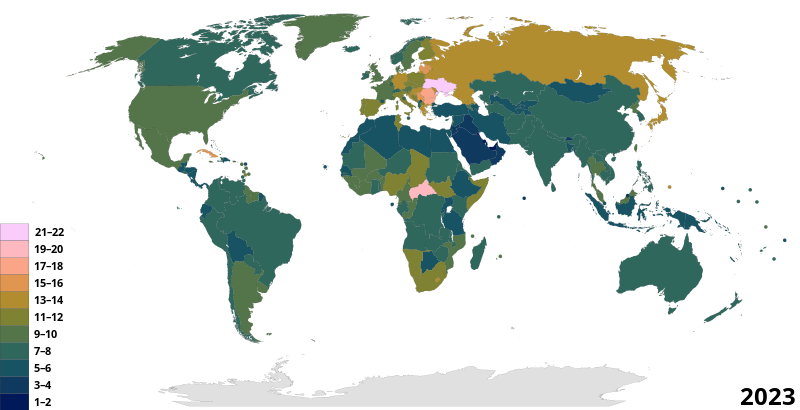
Mortality is simply the rate at which people die in a country. The death rate is the number of deaths per 1,000 people and is measured as deaths / total population * 1,000.
Typically. death rates are high in developing countries due to poor health facilities. However, developed countries (mostly in Europe) have the highest death rates worldwide despite having advanced health systems.
Cardiovascular diseases and cancer are currently the top leading causes of death worldwide according to WHO, 2019 data
Factors Influencing Death Rate
Health
Health-related issues are the leading causes of death around the world. Heart problems, stroke, cancer, and respiratory infections are some of the top killers.
Most developed countries such as Bulgaria, Croatia and Latvia suffer from the above non-communicable diseases. Smoking is prevalent in these high-income countries leading to the above health complications.
On the other hand, low-income countries in Africa die mostly of infectious diseases such as HIV/AIDS, diarrhoea and tuberculosis. Poor health facilities and lack of funds accelerate some of these deaths
Pandemics
Pandemics can increase deaths in a short space of time. The Black Death of the 14th century, and COVID-19 are some of the deadliest pandemics in history
Human Conflict/Wars
Wars can cause a sharp spike in death rates over a short period. The Second World War was one of the bloodiest wars in human history claiming the lives of nearly 60 million including both the army and civilians.
In addition, terrorism and human trafficking also influence mortality rates.
Xenophobia and Genocide
Xenophobia is the total dislike or contempt for foreigners( which leads to the killing of others) while genocide is the systematic killing of people based on race, religion, nationality etc. Both of these increase mortality rates. A good example of Xenophobia is the killing of diasporas living in South Africa.
Natural Disasters
Natural disasters such as volcanoes, earthquakes, floods, faminesand (drought) among others are some top causes of mortality in the world. Some deadliest disasters include the 2004 Boxing Day Tsunami claiming 280 000 lives, the 1931 China floods (1 000 000-4 000 000 lives), the 1815 Mt Tambora eruption (71 000+ lives), the 1958-1961 Great Chinese Famine (15 000 – 43 000 000 lives) and others.
Conclusion
These and others are some of the leading causes of mortality in the world or on a national scale. However, some causes of mortality such as child and maternal mortality are specific and are better described alone.
